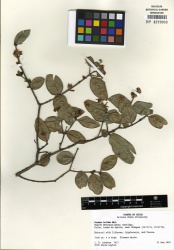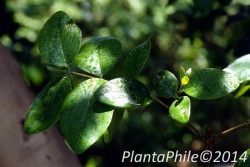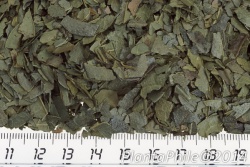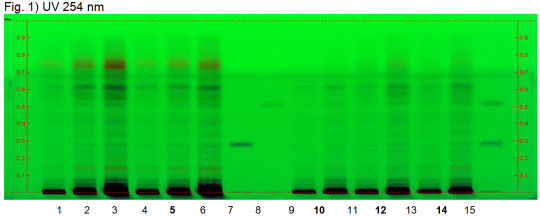Peumus boldus (leaf)
Contents |
Nomenclature
Peumus boldus Molina Monimiaceae
Standardized common name (English): boldo
Botanical Voucher Specimen
|
|
Organoleptic Characteristics
Macroscopic Characteristics
|
|
|
Microscopic Characteristics
High Performance Thin Layer Chromatographic Identification
|
Boldo (leaf) (Peumus boldus) Lane Assignments Lanes, from left to right (Track, Volume, Sample):
Reference Sample(s) Reference: Dissolve 2 mg of boldine in 5 mL of methanol. Dissolve 20 mg of hyoscine hydrobromide in 5 mL of methanol. Stationary Phase Stationary phase, i.e. Silica gel 60, F254 Mobile Phase Diethyl amine, methanol, toluene 10:10:80 (v/v/v) Sample Preparation Method Sample: Mix 1 g of powdered sample with 10 mL of methanol and sonicate for 10 minutes, then centrifuge or filter the solutions and use the supernatants / filtrates as test solutions. Derivatization reagent: 1% iodine reagent; Preparation: 2 g iodine in 200 mL of ethanol; Use: Dip (time 0, speed 5), heat at 100 °C for 3 minutes. Detection Method Saturated chamber; developing distance 70 mm from lower edge; relative humidity 33% Other Notes Images presented in this entry are examples and are not intended to be used as basis for setting specifications for quality control purposes. System suitability test (UV 254 nm): Boldine: a quenching zone at Rf ~ 0.28; Hyoscine hydrobromide: a weak quenching zone at Rf ~ 0.52 Identification: Compare result with reference images. The fingerprint of the test solution is similar to that of the corresponding botanical reference sample. Additional weak zones may be present. Under white light the chromatogram of the test solution shows a brown zone corresponding to boldine at Rf ~ 0.28. Above this zone there are three brownish zones at Rf ~ 0.33, 0.40 and 0.50, and two green zones at Rf ~ 0.61 and 0.74. Source: HPTLC Association [4] |
Supplementary Information
Sources
- ↑ MOBOT, Tropicos.org http://www.tropicos.org/Image/100003144
- ↑ PlantaPhile http://plantaphile.com/
- ↑ PlantaPhile http://plantaphile.com/
- ↑ HPTLC Association http://www.hptlc-association.org/



